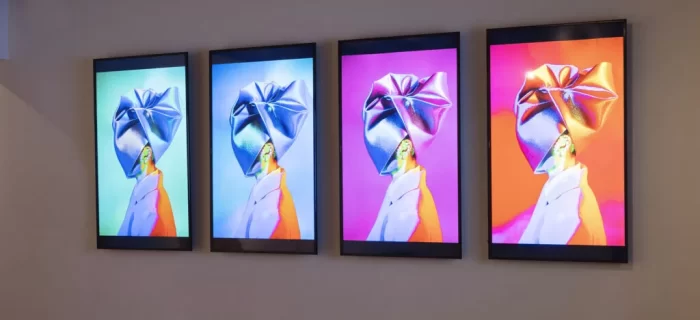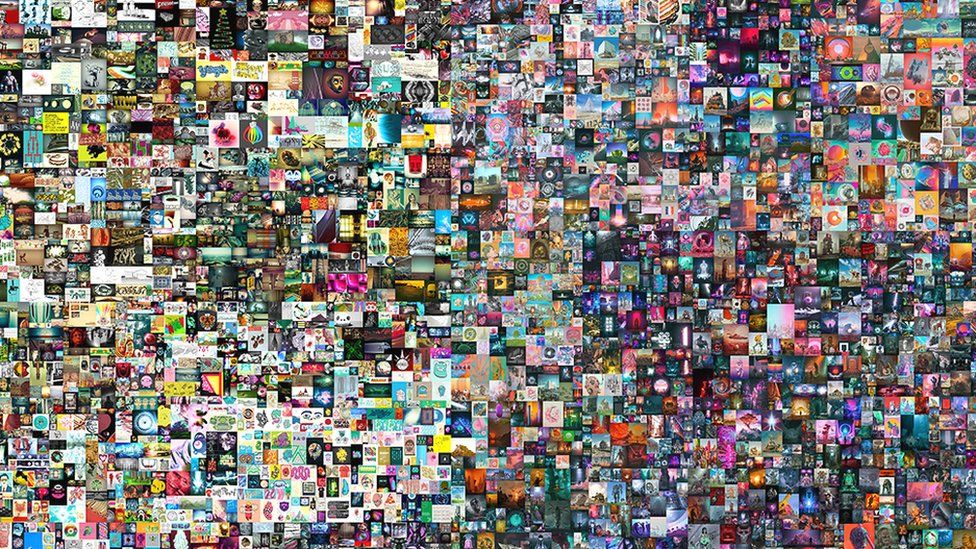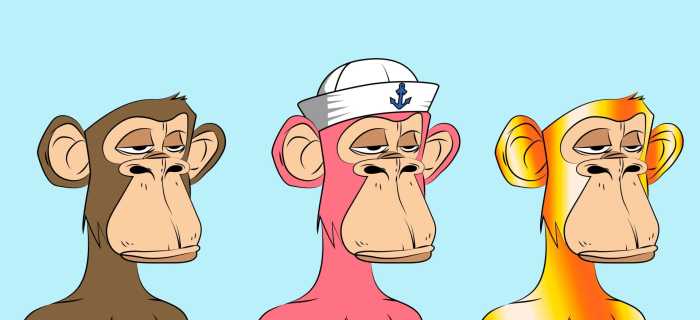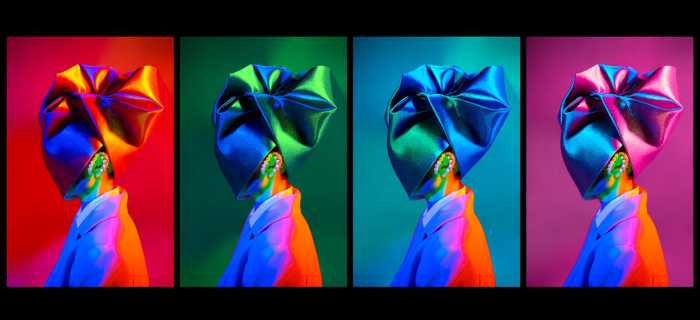Why Should We Separate Real Art From NFTs of the Bored Ape Yacht Club Type?

The old adage states that art is subjective — a matter of perception and taste, one that pampers individual senses and provokes deeply personal notions of beauty and creative expression. Be that as it may, even the layman can tell that the level of effort and sophistication, both in terms of technique and sensational substance, invested by the artist into a specific work will reflect its quality and ultimately — its value.
In recent years, however, the endless debate about the definition of quality art has escalated with the advent of new mediums leveraged by artists in their pursuit of both expression and recognition through fortune. The Non-Fungible Token (NFT) is now an inseparable reality in the world of art, extending its reach into the digital environment in more ways than just presence. But when it comes to NFTs, critics are no longer carefully tiptoeing the fine line of definition, but boldly stating that there’s art and there’s art.
Some may say it’s no wonder, given that the concept of art has been distorted since the days of Duchamp’s Fountain and Artist’s shit? Still, is it correct to call NFT digital art or is it just an expression of creativity?
Art V.S Commerce, Or Does It Really Matter?
Now here’s the thing. There are two types of NFTs — commercial and creative. Well, the truth is that NFTs, by their nature, are financial instruments. They are associated largely with hype and are purchased with the only purpose of making money on their subsequent resale in case of continued valuation based on said snowballing hype and subsequent community interest growth. One can divide one NFT into fractions and sell it as shares to multiply the profit if the NFT goes up in value. In December, more than 28,000 users spent a total of $91.8 million to buy 266,445 shares of a digital work called “The Merge.”
But there is also the other type of NFTs that are created not to create some value from scratch, but to secure the value of an existing artwork by creating scarcity. Artists mint physical items of art as NFTs. The point of doing this is not to replace the work itself. It’s to secure data about that work and to allow a wider group of people to access it.
Still, commercial NFTs typically receive more media coverage, while truly creative artworks may remain noticed only by a narrow circle of viewers. The reason is quite simple and deeply rooted in the general capitalist framework of the global audience’s mindset, which encourages and foresees the continued purchase and sale of misprized things. NFTs form part of this capitalist scheme, as they can be easily equated with mass-produced, poor-quality consumer goods backed by powerful marketing and advertising campaigns.
Take Beeple’s grotesque works that send the viewer’s gaze into a tailspin with their unfocused palette of colors and haphazard shapes. And yet, these random mosaics of images, like the “First 5,000 Days”, fetched $69,000,000 at auction. Was the artistic value element at play? Not quite, just the prerequisite forced hype campaign launched on the eve of the sale. It reminds Duchan’s ready-made art concept and is sold even at a bigger price.

While bidders really liked Beeple’s work, they also wanted to create some sensation for NFTs and cryptocurrencies. Some experts called Beeple’s art piece sale the most genius way to advertise the Ethereum (ETH) cryptocurrency, which doubled in price over the next six months.
And what of the ultra-low quality Bored Ape Yacht Club collection of pixelated monkeys that can be put to shame by even 8-bit era detailing? As one looks at the weird faces of the apes in the collection, their expressions that exude obnoxiousness, boredom, disdain, emotional emasculation, and even narcotic intoxication, the only thought that comes to mind is that each image parodies its owner, mocking their gullible nature for having fallen for such digital worthlessness.
Art like the Bored Ape Yacht Club collection feeds off emotions, impulsive drives of the moment, and the pressure of desire for social inclusivity in an imposed community of exclusives, while being nothing but a fleeting fad riding the slowly decelerating wave of hype driving NFTs. It is all about leveraging the individual ego of the rich and the overall consumerist framework for the sake of sales, not art. As long as some are ready to pay for a fad, because they are bored of all-permissiveness, there will always be Bored Ape Yacht Clubs.

The whole concept behind the Apes feeds on the brilliantly executed marketing ploy that it is. Exclusivity in a virtual social club through ownership of ugly digital avatars that are supposedly “unique”? Seriously? Drawing graffiti in a stinky toilet stall as a member of a community of digital avatar holders does not add exclusivity or status in artistic terms, but rather degrades the essence of art down to digital doodles.
Is There True Art in There Somewhere?
True art is one where a financial component is complimentary, not primary. Not a statement that relates to NFTs, many of which, like the Bored Ape Yacht Club collection, tend to be overpriced. Their hype-based nature implies that they may lose their relevance as easily as they appear. Demand for classical art is what defines the course of development for the NFT phenomenon in the art world. Simply put, while physical artworks can be minted and sold online as NFTs, NFTs with no art-backing them can be exhibited at prominent exhibitions.
Take the “Metamorphoses” by Concept2048 as an example of direct opposition. Created by a duo of digital artists – Ekaterina Perekopskaya and Rostyslav Brenych, the collection of solemn portraits showcases a truly masterful approach to color blending and an intimate tango with light itself. Rightfully so, since Universal Light lies at the heart of the collection’s spiritual inspiration and backstory that delves into such iconic concepts as sustainable development and human progress. The more one gazes at the works in the “Metamorphoses” collection, the more it becomes apparent that conceptual artwork can seamlessly blend with philosophical foresight and the brilliant execution of artistic techniques to result in a vivid and provocative image.

Impact is what some talented artists are trying to offer, as Concept2048 is doing by conveying to its public the problem of global changes with a clear call for solutions embodied through creativity by involving people via the ownership of NFTs. This gives new meaning to ownership of their NFT collection as a conceptual idea uniting a 100,000 community and those involved who can actually impact the quality of life on Earth. This elevates Concept2048 in stark contrast to how owners of Bored Ape Yacht Club fret away hundreds of thousands for digital grimaces.
An important testimony to the actual ideological and even humanistic underpinning of Concept2048’s approach is the fact that the artists were offered to sell the artwork presented at the sixth edition of the biennial art exhibition “Personal Structures” in Venice for $137,000, but refused in favor of creating their own NFT collection. The presale of the “Metamorphoses” collection is currently underway, with the first round having been sold out in 18 minutes.
Have a look at Blake Kathryn, whose ethereal digital art transcends fantasy and futurism to blend dimensions and time into a visual feast. The marvelous texturing, vibrant color palette, and outstanding execution through the use of multiple tools and techniques indicate effort, time, and thought invested in the artwork.
Or just throw a fleeting glance at Richard Tea’s own Royal Cats&Dogs NFT Collection for some food for thought about whether the ghastly and simplistic, yet overpriced, Apes can compare with the level of artistic complexity and quality of the artists who actually put effort into their creations.
What You Get Is Not What You Pay For
Art has historically been considered a work that requires both inspiration and execution to attract admiration and recognition on the part of audiences and critics alike. There is a reason why we are perpetually mesmerized by the legacy of the great masters of the Renaissance, and yet squirm uncomfortably when the replicated and recolored snapshots by Andy Warhol are being forcefully shoved onto the same pedestal.
The absolute same concept of recognition applies to NFTs and the artworks leveraging them as a medium. Any hype eventually fades, and time will prove that only the NFTs that have some value and tangible art backing them will last to be displayed. Firm intrinsic value holds sway through time, which is why established brands like Adidas, or music artists like Steven Aoki, who maintain interaction with existing audiences of users have a greater chance of capitalizing on NFTs in the long term.
What do you think? Leave a comment.











I think crypto currencies, NFT’s etc. have value in their utility. In that their existence scratches an itch in the global economy/culture so people find having them useful and hence value them. We may not like or fully understand this but those who value digital currencies don’t seem that bothered about the views of sceptics. So my guess is NFTs are here to stay.
Too much money concentrated in too few hands leads to this kind of nonsense.
Actually if you have been active in the cryptosphere more than a few years you aren’t going to be poor. The money isn’t that concentrated as the growth has mostly been in in the newer projects.
One day someone will realize that everything is worthless… even a Picasso or a Monet, it’s paint on canvas and worth no more than firewood come the day.
One could spend a while and many words deconstructing this, but it shall not be me.
What I will say is that the value and worth placed on something is largely based upon – among other things – the assumption that there’s plenty of time and people left. Where there’s time and people, things may be created; including value in those things.
I’d prefer a nice Monet on the wall than a monkey screensaver any day.
NFTs are a decentralised Ponzi scheme. If you don’t get your money out quickly enough you won’t get anything.
I remember when I was at high school in the mid nineties, our computing class had an art program which had cartoon faces that you could colour in and stick cartoon accessories on. Pretty sure there was a monkey one that looked just like bored ape.
If only at the time I’d realised that if I’d kept them for twenty years later I could have ended up a millionaire.
Sure, if you also had a massively exclusive club to offer membership to along with it.
These are ridiculous and a scam but it’s a laugh to make fun of them when the ‘real’ art world has stuff like Rothkos selling for $60m, $70m, $80m and more…
Yeah, great isn’t it, and long may it last – well at least until I retire in a couple of years!
Rothkos are actually very impressive though, and rather beautiful. I would take a decent print of Orange & Yellow 1956 over a Banksy original any day.
If you saw them without knowing anything about the artist I doubt you would consider them more than an interesting curiosity, after all they are barely distinguishable from the kind of wall art you can find in B&Ms.
I seem to recall some old saying about a fool and his money. How did that go again?
Why do NFTs remind me of the Emporer’s New Clothes? Anyone else?
I understand collecting and paying a big price for it, but is there a rule that all these block chain artworks have to be something made in five minutes?
It’s called an idiot filter, like the execrable English used in Nigerian Prince emails. If you can tell the artwork is terrible and could be bashed out by anyone in five minutes, you’re not the target market.
Here’s hoping that the bottom falls out of this “art” market very soon, and that the NFT investors suffer huge losses.
Unfortunately even commenting on NFT art — and, more especially, NFT ape art — gives this squalid commercial practice more publicity than it deserves.
What do NFTs allow that couldn’t already be done before, and without wasting massive amounts of energy?
NFT are such a great way to launder money….
Underrated comment right here ^
At last – somebody who knows what’s going on.
I paid $18,000 for a blockchain entry.
People were spending silly money on questionable art for little but an ego boost, social cred, and “investment value” before NFTs ever existed.
(Another) financial crisis up ahead. Just too much money out there looking for big, speculative returns.
Impressionism – “it’s not art”
Cubaism – “it’s not art”
Surrealism – “it’s not art”
Minimalism – “it’s not art”.
Anything since ca 1920 – “it’s not art”
It may be art but an NFT doesn’t get you ownership of it, there’s no copyright, there’s no object that you own. The process pollutes the world a little bit more and drains your wallet a lot more.
I think we can all agree that cubaism is not art.
Money laundering scheme for sure.
It’s money laundering pure and simple – A pyramid/ponzi scheme for the generation too young to know what they are. Just wrap it in “for the lulz” memes and sell it like skins in a gatcha game, job done.
It is suspected that a few people are trading between themselves using the annonymity that the Blockchain provides to pump the market and draw in dumb money. Looks like it’s working too.
OK it has some sort of social function but to me, NFT’s are a pure form of consumerism, it is the transaction that matters, the artefact is irrelevant.
An NFT is effectively an expensive receipt with no tangible ownership.
Just like the majority of high end art sales then. Almost all of them are so that some rich nob can say they own that thing that other people also wanted. Sure some are extremely beautiful and maybe worth a lot for that alone, take the Mona Lisa perhaps, but then you have every other bit of tat that the same artist (or his students) produced being worth loads purely based on proximity, which is really not a lot different.
An interesting take on a topic that should be talked about more. It’s a difficult one because there hasn’t yet been a unified ‘explanation’ of the idea of ‘good art’ or even ‘art’ as it is, not to mention how complicated it gets when we bring that discussion to the digital realm.
Came here to express some of my annoyance and dismay at NFT’s and what they portend, only to find my fellow The Artifice readers have done so in ways more eloquent than I could hope to.
Creating cartoon apes through an algorithm is a unique way to create ‘good art’ but doesn’t capitalize on NFT in the long term. Is digitally created art really ‘true art’?
Welcome to the METAVERSE.
Where reality doesn’t matter, except it really does. We’re in end stage capitalism now, so whereas before you used to receive goods and services for money now you receive a digital receipt for a digital object that has no reality. Meanwhile the people making the money are laughing all the way to the end of the world.
Just don’t look out the window, you might see that things are changing faster than expected.
Meta scares me even more than its previous iteration.
The other other way of looking at this is that really the value of *all* art is subjective and indeed what constitutes art is again, entirely subjective.
Objectively, most art is of no intrinsic value, in fact if it has intrinsic value of benefit to our physical selves that then it will struggle to be considered art.
Art is food for the mind and imagination only and who is to judge what feeds the mind of the modern ape as opposed to the legacy minded ones.
The value of art come from plain straight appreciation, and there’s not much to appreciate in these things.
Didn’t know this. The way it’s presented is very helpful
Thank you! Agree with your take on this and appreciate the presentation.
I don’t think art, even some of its greatest practitioners, can be entirely exempt from considerations of ego and money all of the time.
I know a few artists who have considered it (including me). The lure of money is of course tempting. But at what price, because the costs are high; not financially, but ethically, socially, and above all – despite what anyone claims – environmentally.
Good comment.
Just forward 10 years, and every art piece of value, will have a certificate NFT to guard it’s provenance.
An NFT does not do that any more than typing “Mona Lisa” has anything to do with the painting in Paris.
As technology evolves, the discussion of whether something will be replaced arises. It’s similar to when photography emerged. Whether or not an NFT can be considered real art depends on the value and importance each person attaches to it.
This is a really good topic and great information. One day I’m hoping to convert my art to nfts.